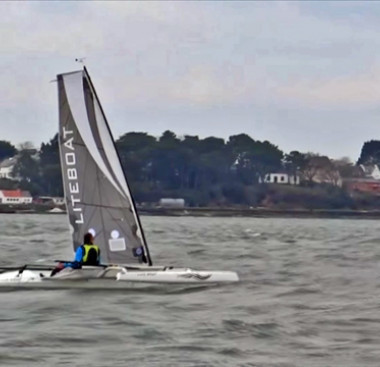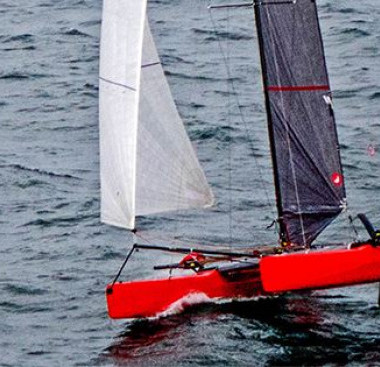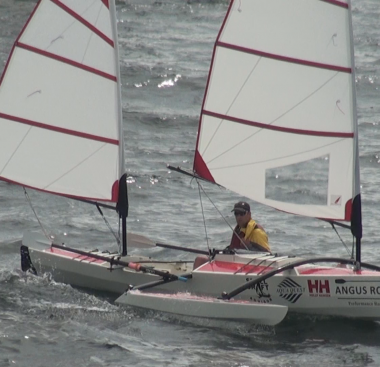R2AK 2016 and Parallel Evolution
The starting horn for the second annual Race to Alaska sounded at 6:00 am, Thursday morning, the 23rd of June. 58 boats crossed the starting line and headed for Victoria, BC, the first leg of an epic 750 mile race to Ketchikan - no motors, and no support. For a few days beforehand, The small town of Port Townsend, WA was transformed into race headquarters, full of teams, boats, officials, sponsors, volunteers and media. We PT villagers pinched ourselves and wondered “are we dreaming?” as team after team pulled into town, each one with a boat cooler than the last.
The race rules permit both wind and muscle power for locomotion, and no restrictions on sail area, crew, or length. This leads to some creative human power retrofitting to already fast sailboats, some with sliding seat rowing stations or pedal drives. Alternately, human-powered craft like row boats and kayaks are also entered, some with sails and amas retrofitted.
The rules also stipulate a “no-sail” zone upon entering and departing the harbor in Victoria, so even the ultimate sailing machine still requires at least a token effort in human-power.
Team Mad Dog Racing took home the $10,000 nailed to a log first prize. The three man crew sailing a Marstrom 32 “horizoned” the fleet in the blistering time of 3 days, 20 hours, 13 minutes. They sailed a bold and brilliant race, and I’m still wondering about their secret to staying awake, alert and effective for nearly four days. However, even as I write this on July 9, boats are still finishing, two weeks after the start in Victoria. (Yes, it’s confusing. The PT to Victoria leg is a qualifying round. The actual race to Alaska starts from Victoria, BC).
The widely varying nature of the entrants has lead to informal “race within the race” competition, with all-female-teams, F-boats, or sliding-seat-rowing-single-hander-trimarans. Yes, there are even two of those!
Team Angus Rowboats is a local (Vancouver Island) effort from Colin Angus, human-powered circumnavigator etc., who has added a pair of small amas and a cat-ketch sailing rig to a stock plywood/epoxy 19’ RowCruiser. Normally I’m not such a fan of this kind of multihull design, the ‘Archive of Failed Multihulls’ being filled with boats that began life as monohulls. However, in this case the total is greater than the sum of their parts and this boat is brilliant under sail while still tolerable to row, and that is no small accomplishment.
Team Liteboat is sort of the opposite of that approach - being French, carbon fiber, and a wave piercing trimaran. Mathieu Bonnier has designed the Liteboat to be the ultimate single-handed adventure craft, and is proving it by rowing the Northwest Passage (nearly) and crossing the Atlantic (completely). Now he’s entered the R2AK to show us New Worlders how backwards we all are.
That said, the two boats are remarkable more for their similarities than their differences - an example of parallel evolution at play. It will be fun to watch these two on the way to Alaska.
Update: Colin Angus has arrived in Ketchikan! The first boat under 20’ to arrive. Congratulations Team Angus!





